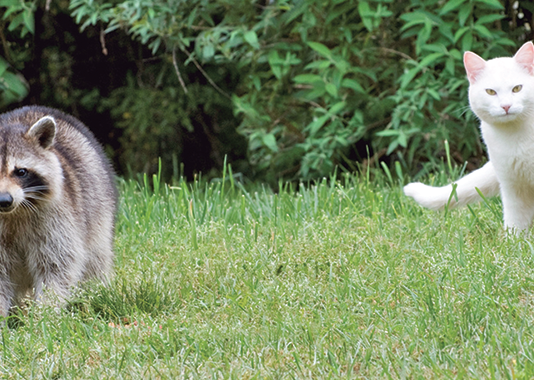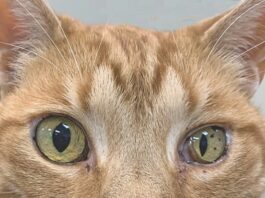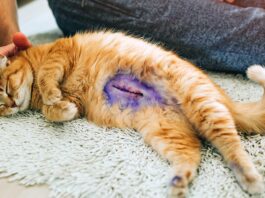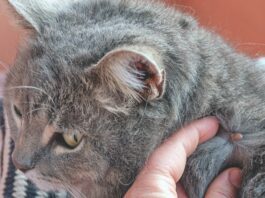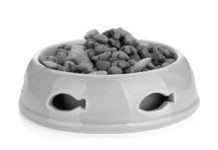Life-Saving Screening for Hemophilia
Advances in veterinary medicine and an increase in animal blood banks have improved the diagnosis and treatment of hemophilia to the extent that some cats who once would have died from the life-threatening disorder can now live full lives.
Ask Elizabeth: January 2015
My 12-year-old cat has hyperthyroidism. She cannot tolerate methimazole, and I have tried special food (she didnt like it), homeopathic treatments, dietary additives and even consulted an animal psychic. Nothing has an effect, and I dont want to put her through surgery or radioactive iodine therapy. They both sound horrible and also too expensive. Have we run out of options?
How Mutated Genes Pass To The Next Generation
Hemophilia occurs as a result of genetic mutation, and once it develops, it can be transmitted to a cats offspring. Because female carriers are asymptomatic (meaning they dont show any symptoms), it can be challenging to identify them to avoid passing the hemophilia mutation onto the next generation.
Short Takes: January 2015
In little more than a decade, changes have taken place in veterinary medicine to help prevent cats developing malignant tumors at the site of certain vaccinations. However, 22,000 cats in the U.S. still develop injection site-associated sarcomas (ISAS) every year, and the tumors are often more aggressive and prone to recurrence than spontaneous ones.
In The News: January 2015
In little more than a decade, changes have taken place in veterinary medicine to help prevent cats developing malignant tumors at the site of certain vaccinations. However, 22,000 cats in the U.S. still develop injection site-associated sarcomas (ISAS) every year, and the tumors are often more aggressive and prone to recurrence than spontaneous ones.
Where To Find Help
These pet loss support hotlines are among those available:
Theyre Giving Kittens a Chance at Life
Of all the animals in shelters, young kittens are usually the most at risk. Theyre fragile, prone to infectious illnesses and have special care needs. While some are placed in foster homes to be hand-raised until they are old enough for adoption, many shelters euthanize them as soon as they are brought in because they dont have the infrastructure or staff to care for them.
Reducing the Risk of Food-borne Illness
Demystifying the ingredients in commercial food is only one step in providing a healthy diet for our cats. The ongoing challenge is preventing the spread of food-borne illness to animals and people in the household. At last count, manufacturers had recalled five of six dog and cat foods this year because of possible contamination with the bacteria salmonella. The sixth recalled food was suspected of containing the bacteria Listeria monocytogenes that can also cause serious infection in humans and animals.
Looking Beyond the Ingredient Label
In our quest to eat healthy food, we often extend that enthusiasm to our cats. We evaluate their diets with the same scrupulous care we give our own, but commercial cat food can still remain somewhat of a mystery. We question if preservatives are safe. Should we avoid genetically modified ingredients? What about artificial coloring?
Ask Elizabeth: November 2014
Q. Our year-old male cat, found at a county animal shelter seven months ago, has been diagnosed with eosinophilic granuloma complex (EGC). His symptoms are incessant scratching, puffy gums, blistering mouth, swollen front paw, lameness, limping. Our veterinarian has prescribed steroids for him, and these have been somewhat helpful, but can you explain this disease so that we can better understand what is going on? …
Short Takes: November 2014
Estimates are that osteoarthritis affects 90 percent of cats over the age of 12 years. Confirmation of the disease, however, can sometimes prove elusive. In the search for an accurate diagnosis, the Winn Feline Foundation has awarded a grant, funded by the animal health company Zoetis, to researchers at the University of Melbourne. Their goal is to develop a blood test biomarker - a molecule indicating an abnormal process - so the disease can be identified earlier.
Most Cases of Deafness Are Acquired
If your cat has become unresponsive to everyday sounds, squeaky toys or his name, if he doesnt know youre in the room unless you touch him, or if a loud noise fails to awaken him, a veterinary visit should be scheduled to determine if hes losing his hearing. Hearing is a vital sense for cats and greatly contributes to their self-preservation and comfort with us. Deafness in cats can be caused by a wide variety of conditions.

